Even at the time of orthodox means of treating human illnesses, human urine was analyzed and investigated visually or in small lab-type settings to examine several signs. The color, consistency, and presence of another material in urine would signal a bigger problem.
Very similarly, today the medical world surrounds the study of urine but in a more scientifically-supported manner. This branch of medicine is known as urology and those specializing in this field are known as urologists.
The word ‘uro’ depicts anything related to the human urine or urinary tract. A urologist, therefore, is a medical practitioner who deals with, diagnoses, and treats disorders related to the urinary tract, the urinary organs, the male reproductive system, and the female reproductive system in a few rare cases. They treat illnesses related to the entire urinary tract or passage that passes, stores, and releases urine from the human body.
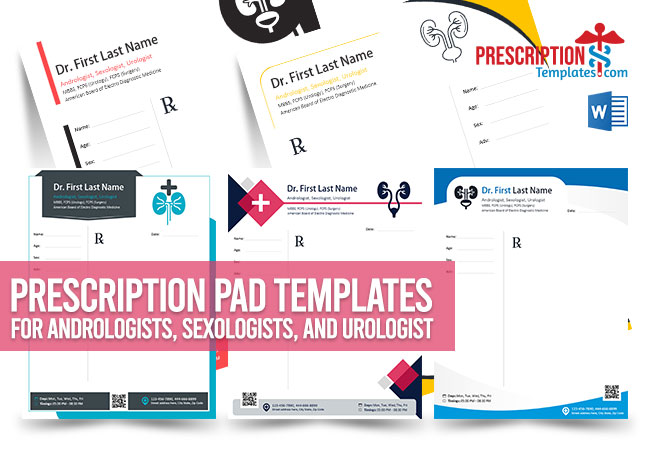
If you are an Andrologist, Sexologist, or Urologist and want to print a beautiful Prescription Pad for you, then you are in the right place. On this page, you can download professionally designed prescription templates designed in MS Word with high-quality vector graphics.
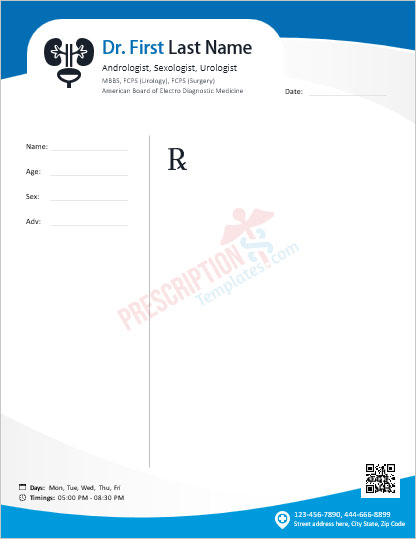
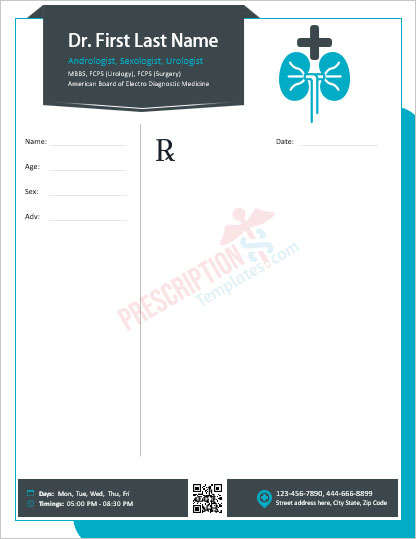
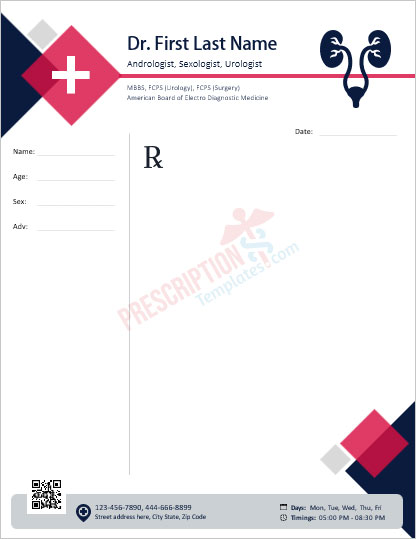
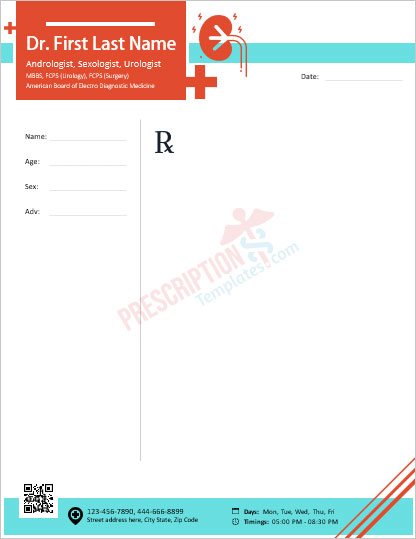
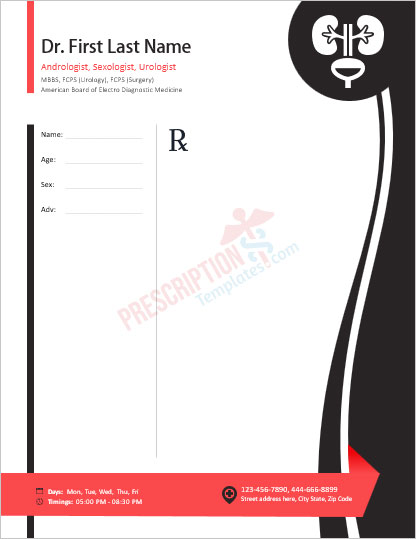
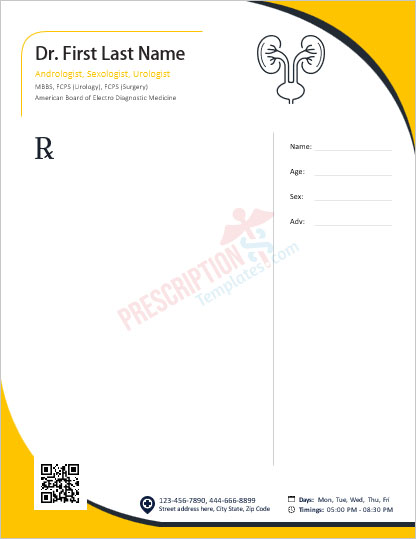

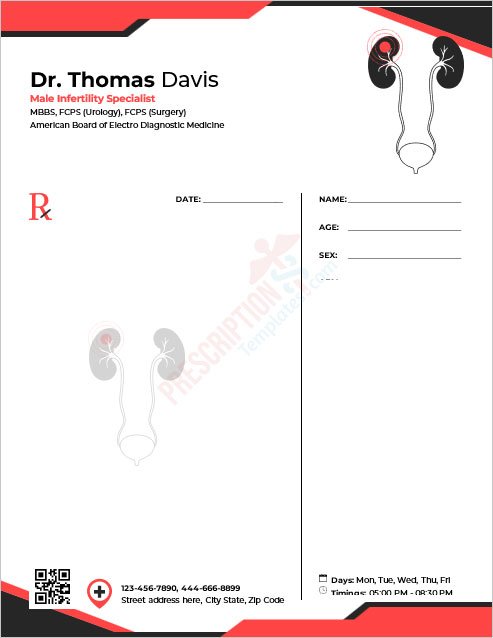
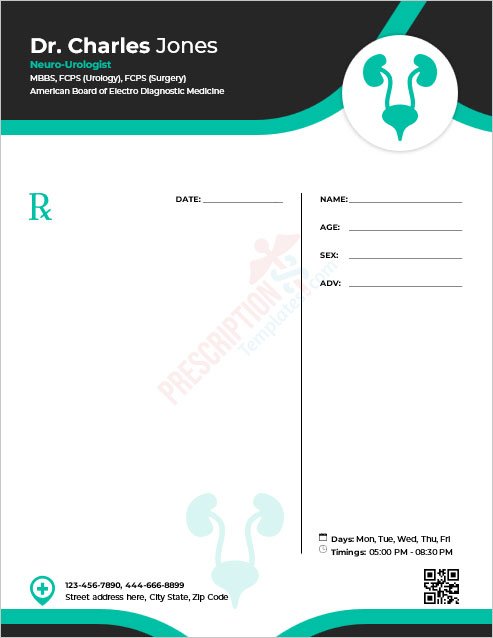
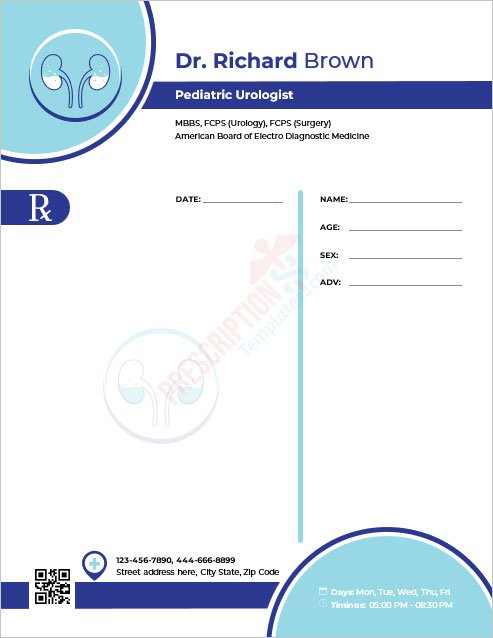
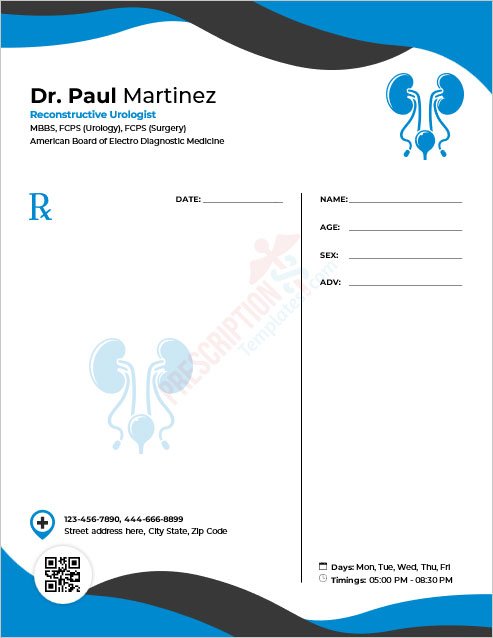

A urologist carries knowledge about the urinary system and the related organs that include:
People experiencing the following difficulties related to their urinary tract and the reproductive system are expected to see a urologist:
Common conditions that might make you want to see the urologist at the earliest include:
Based on the notes that your primary physician provided in the preliminary referral report, the urologist will begin his treatment. This would normally include a physical examination that might or might not be followed by several tests such as CT scan, MRI, ultrasound, cystoscopy, cystogram, x-ray imaging, urine testing, urodynamic testing, or a biopsy.
After the disease has been diagnosed, your urologist would either suggest you a medication route or a surgical route. The medication might include antibiotics, hormonal treatment medication, chemotherapy, or other medicine to treat conditions of the urinary bladder or a specific part of the urinary tract or the reproductive system.
When it comes to the surgical pathway, procedures such as laser treatments, keyhole surgeries, or open surgeries will be performed to treat your urological illnesses.
Urologists can be categorized based on the particular kind of urology that they have their expertise in, such as:
Sexologists, andrologists, and urologists can diagnose a wide range of issues related to sexual health and reproductive health. Some of the possible issues they may diagnose include:
When writing a diagnosis, it is important to follow a standardized format. One commonly used format is the SOAP note format, which stands for Subjective, Objective, Assessment, and Plan. Here’s an example of how a diagnosis might be written in SOAP note format: